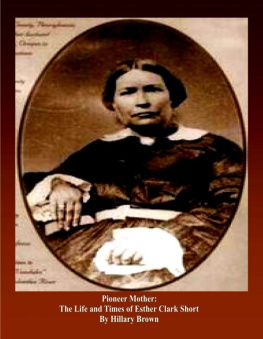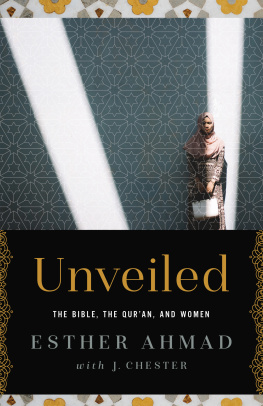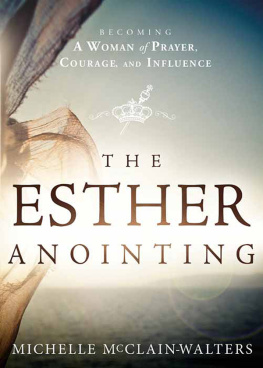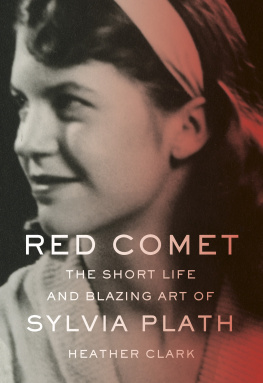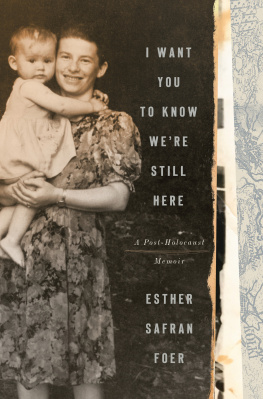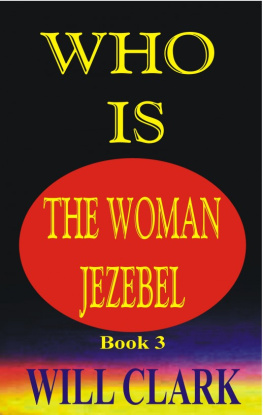Pioneer Mother:
The Life and Times of Esther Clark Short
By Hillary Brown
Copyright Hillary Brown 2011
Smashwords Edition, License Notes
This ebook is licensed for your personalenjoyment only. This ebook may not be re-sold or given away toother people. If you would like to share this book with anotherperson, please purchase an additional copy for each recipient. Ifyoure reading this book and did not purchase it, or it was notpurchased for your use only, then please return to Smashwords.comand purchase your own copy. Thank you for respecting the hard workof this author.
INTRODUCTION
History stays alive through family stories. Iwas told as a child that a grandmother was set adrift on a powerfulriver so that bad men could take her land. What we did not knowthen was that Esther Clark Short had been a Native American womanwho went West. She was both a claim jumper and the founder of thetown of Vancouver, Washington. She lived in a time when America andthe West were places of danger and opportunity.
This story has taken over sixteen years totell. Spending time on history is not unusual for people who loveit. Genealogists like my dads friend Peggy spent decades pouringover records in sprawling 18th century handwriting and squinting atmicrofiche forever. I however, am an awkward historian. My eyes gettired from too much squinting. I get bogged down by dry facts. Thefirst years of my research were often slow and complicated. Estherdid not have a diary and did not leave letters. Yet, her historyand the history of the early years of the American PacificNorthwest hold stories too interesting not to share. Where theinformation has been lacking on Esther and her family I have foundother worthy stories surrounding her life and times. It is my honorto share them with you
CHAPTER 1
Esther Lucy Clark Short. was born on December24th, 1806. #Her parents remain unknown except her father is listedas German and her mother Algonquin. Her children have told thepress and various authors, her birthplace was Tioga County,Pennsylvania. Why she would not say who her parents were by name isa mystery.To better understand her I had to look at the people andthe place where she lived. It provided clues as to the remarkablewoman she was to become.
For several years I labored under thedelusion that Esthers mother was Algonquin from the Ottawa RiverValley in Canada. I studied the Alqonquin people of Canada. I evenwent as far as to contact the Golden Lake in Canada for moreinformation. I had not known much about the politics of the timenor considered the history of the area. Algonquin may refer to atribe, a linguistic group, or all of the Eastern tribes from Canadaand New England. It depends on who you read. Esthers mother mayhave been Algonquin, but it is more likely she was raised AmericanIroquois. Perhaps Seneca. The Seneca people lived near TiogaCounty. Its hard to know for certain.
Even Iroquois is a misnomer. The Frenchcolonists named the Iroquois after consulting with the Algonquinand Huron people they traded with. It meant Killer people. # Itwas for good reason. The Iroquois could be ruthless with theirenemies. Torture awaited the losers in any battle.For a century anda quarter before the American Revolution, the Iroquois occupied thepath from Albany to the Great Lakes, holding back the French andcontaining the Dutch and the English. In the 18th century the SixNations remained consistent and bitter enemies of the French, whowere allied with their traditional enemies. Namely, the Algonquinand Huron. The Iroquois' success in maintaining their autonomy fromboth the French and English was a remarkable achievement for peoplefrom a total population of scarcely 12,000.#
What ultimately led to the success of theIroquois were the codes that governed the Iroquois League. TheIroquois League was established prior to major European contact.Most archaeologists and anthropologists believe that the League wasformed sometime between about 1450 and 1600. According totradition, the League was formed through the efforts of two men,Deganawida, sometimes known as the Great Peacemaker, and Hiawatha.They brought a message, known as the Great Law of Peace, to thesquabbling Iroquoian nations. It is said through the miracle ofbeing able to travel in a stone canoe that the Great Peacemakerconvinced the people he was sent from the Creator. The basicmessage was that the murderous infighting between the tribes madethe Creator sad. The Great Law of Peace was a constitution thathelped resolve disputes between the Nations. A complicated set ofceremonies and laws kept the peace and enabled the Iroquois to pickand choose how and where they fought in war, who ran things, and towhom they sold land. Once the infighting ceased, the Iroquoisrapidly became one of the strongest forces in seventeenth- andeighteenth-century northeastern North America. #
The original Iroquois League was often knownas the Five Nations. It was composed of the Mohawk, Oneida,Onondaga, Cayuga, and Seneca nations. After the Tuscarora nationjoined the League in 1722, the Iroquois League became known as theSix Nations. The Tuscarora fled north from the British colonizationof North Carolina and petitioned to become the sixth nation. Thiswas a non-voting position, but placed them under the protection ofthe Confederacy. Strength for the Iroquois meant banding togetherto protect themselves from the forces of colonization.
The Iroquois described the power structure ofthe Nations in terms of something that they knew well. The Iroquoisrefer to themselves as the Haudenosaunee,#which means "People ofthe Longhouse," or more accurately, "They Are Building a LongHouse." The Iroquois lived in Longhouses. Long and rectangular,they were made with connected poles and covered in elm bark. Thelogs that made up the main frame were large and strong. The outerposts were set deep into the ground and made to hold up againstwind and the snow of the North East. The posts and poles for theinterior came from saplings that were tall and straight. Thesetrees were cut to the proper length and the bark was removed fromthe posts and poles to reduce insect damage and decay. Poles werelashed together with strips of bark that had been soaked andbraided. When dry the bark would become stiff and hard. Horizontalpoles were lashed to the posts, both across and along the length ofthe longhouse, greatly strengthened the structure. The roof wassupported by poles that were attached at the tops of the posts andwere bent into an arch that reached from one wall across thebuilding to the opposite wall. There were a series of rafters toadd further support to the roof.
The outer shell was made of elm bark for afew reasons. Elm bark that has been flattened and dried is quitestrong, like a piece of plywood. Elm bark also comes off the treein large sheets. It was harvested in the spring because that iswhen it is easily peeled off the tree. The sheets were flattenedand held with weights while they dried to keep them from curling.The bark of an elm tree has deep grooves or furrows in it that runup and down the trunk. The Iroquois lashed the bark to the frame ofthe longhouse with these groves running horizontally. This was donebecause it was easier to keep the bark flat by pressing it againstthe vertical posts. Then the Iroquois would use an adz to smoothout these furrows so they were smooth enough not to catch the rainas it ran down the roof and sides of the longhouse. The bark washeld down by smaller poles after it was hung and they were lashedtogether.
Like apartments which would hold more thanone family, a longhouse had a series of compartments connected by asingle passage. There were doors on either end. Fires to cook withand heat the longhouse were in the middle of the longhouse in alarge common space. They were often shared by two families. Smokefrom the family fires were controlled by adjusting the smoke holewith a piece of bark. There was a raised platform in these areaswhere families could relax and use the light of the fire to workby. Two to three hundred households would share up to fortylonghouses in an Iroquois village.
Next page
